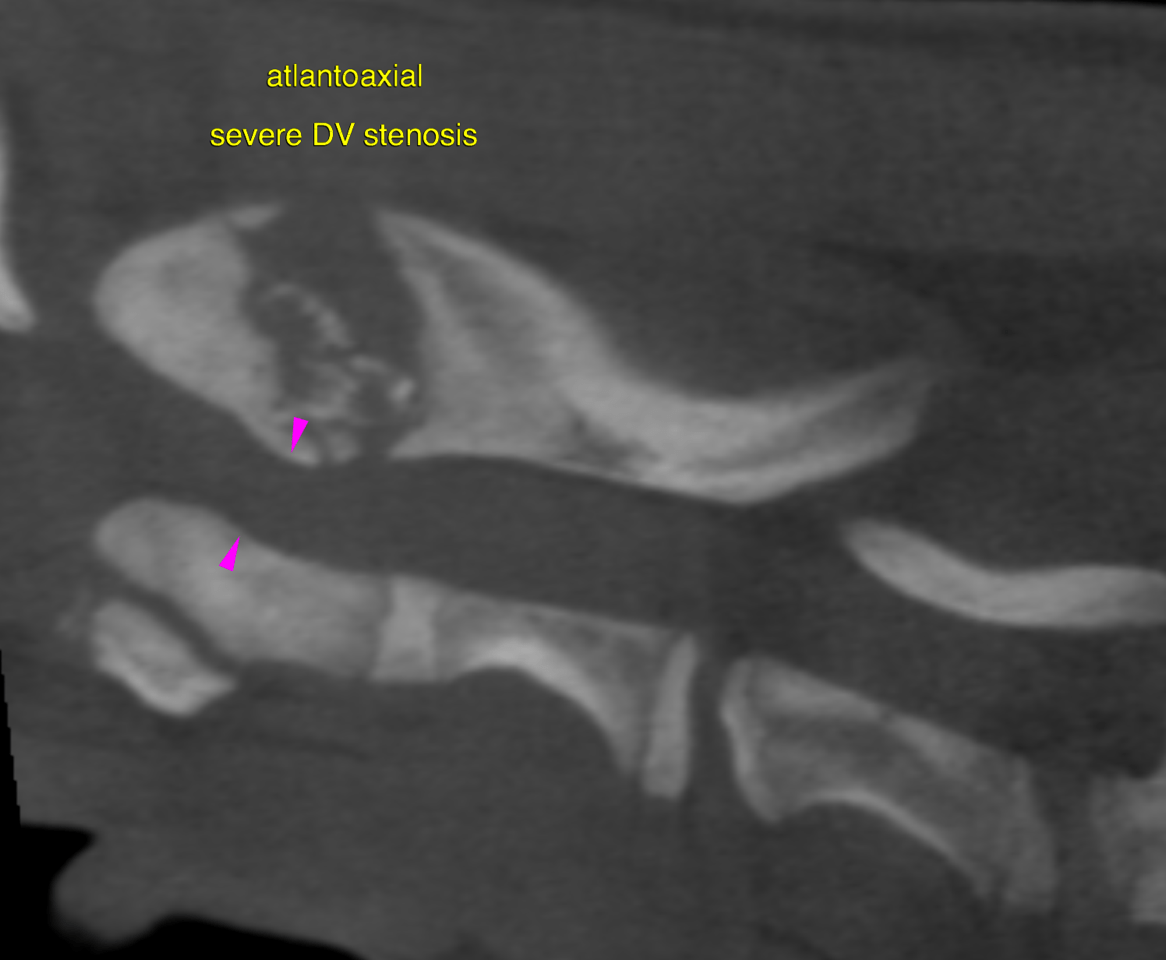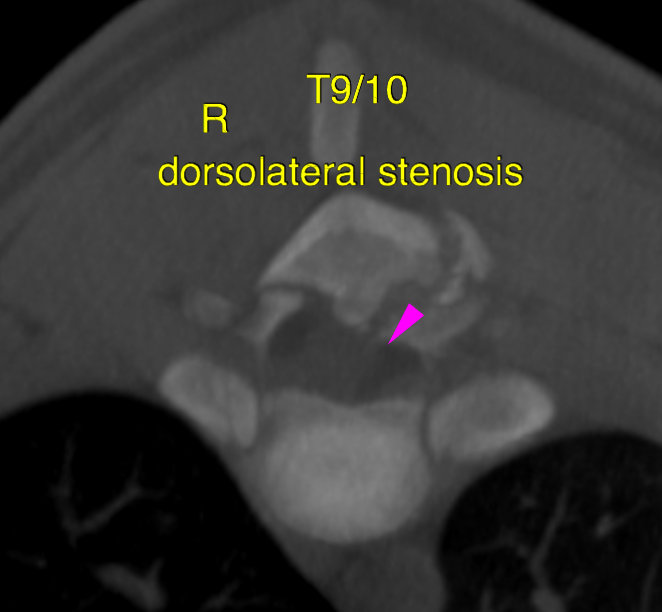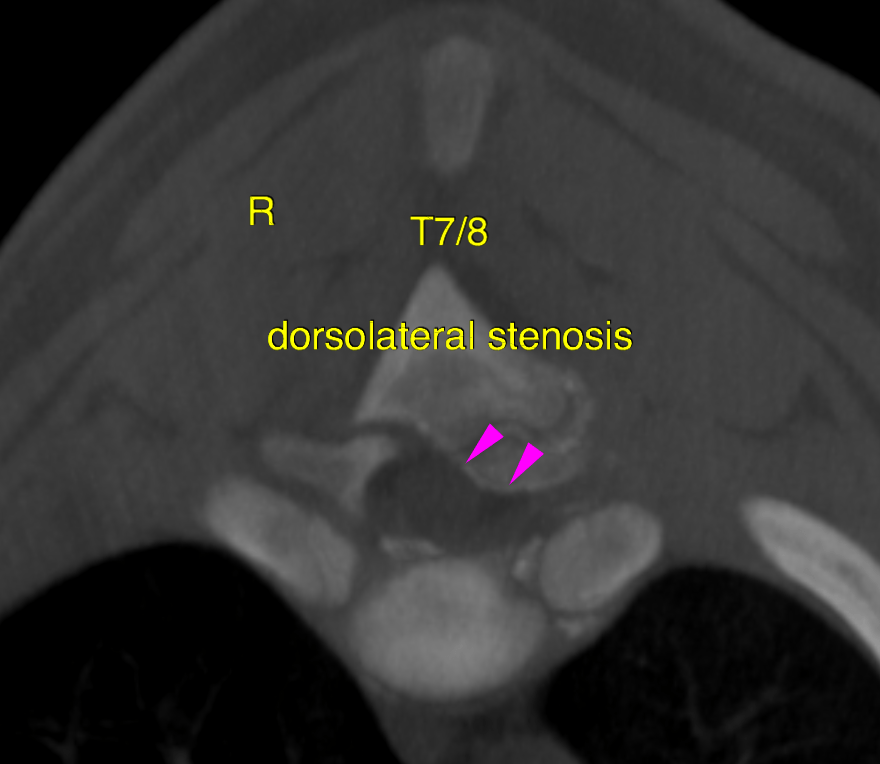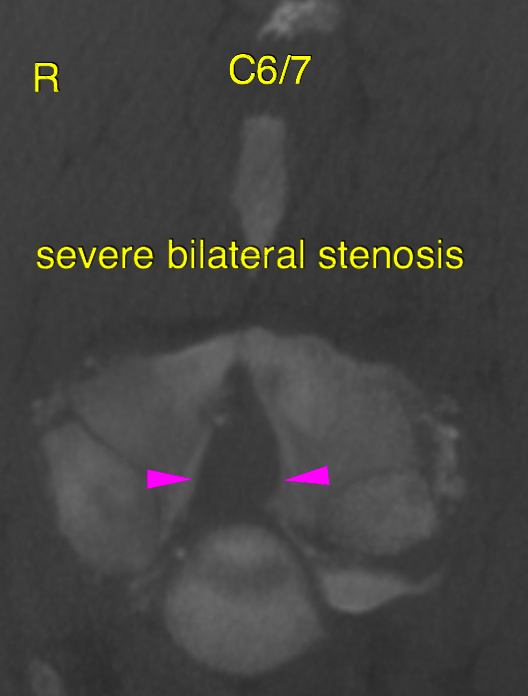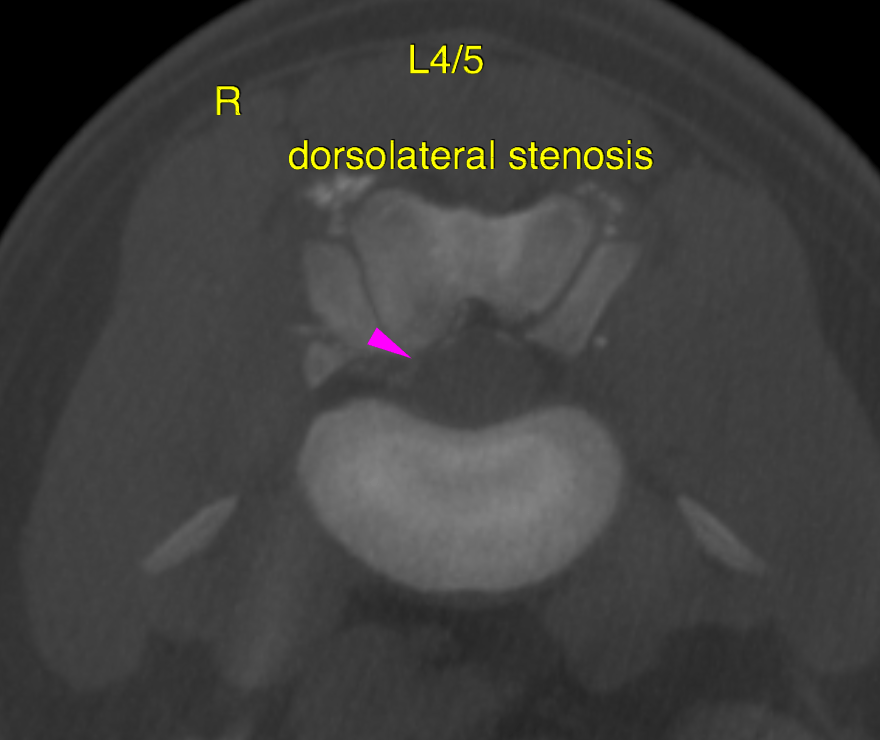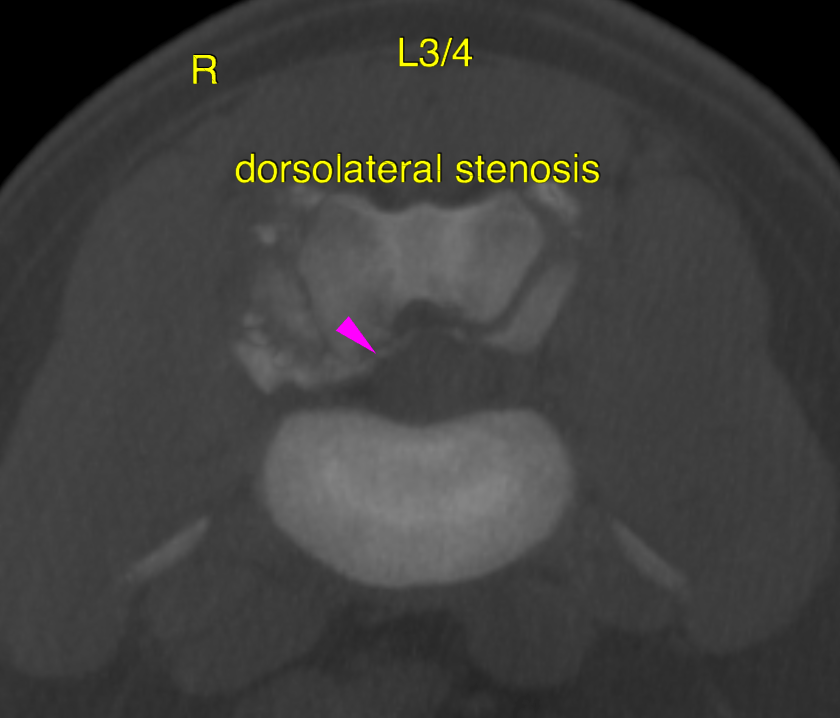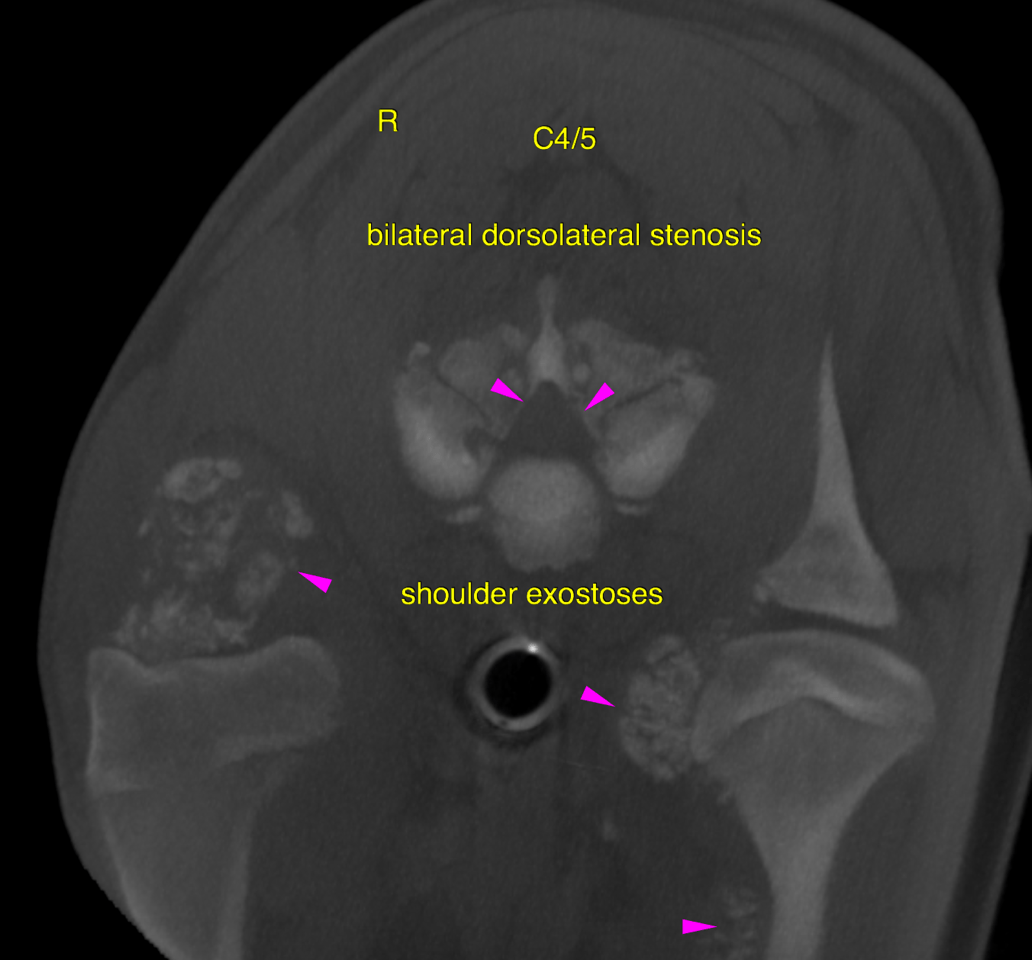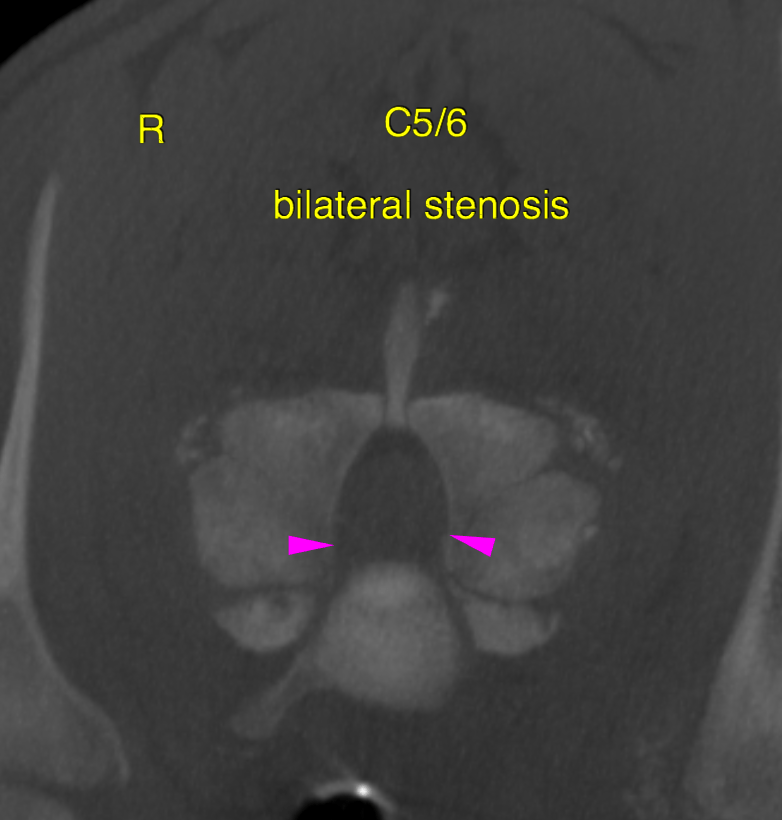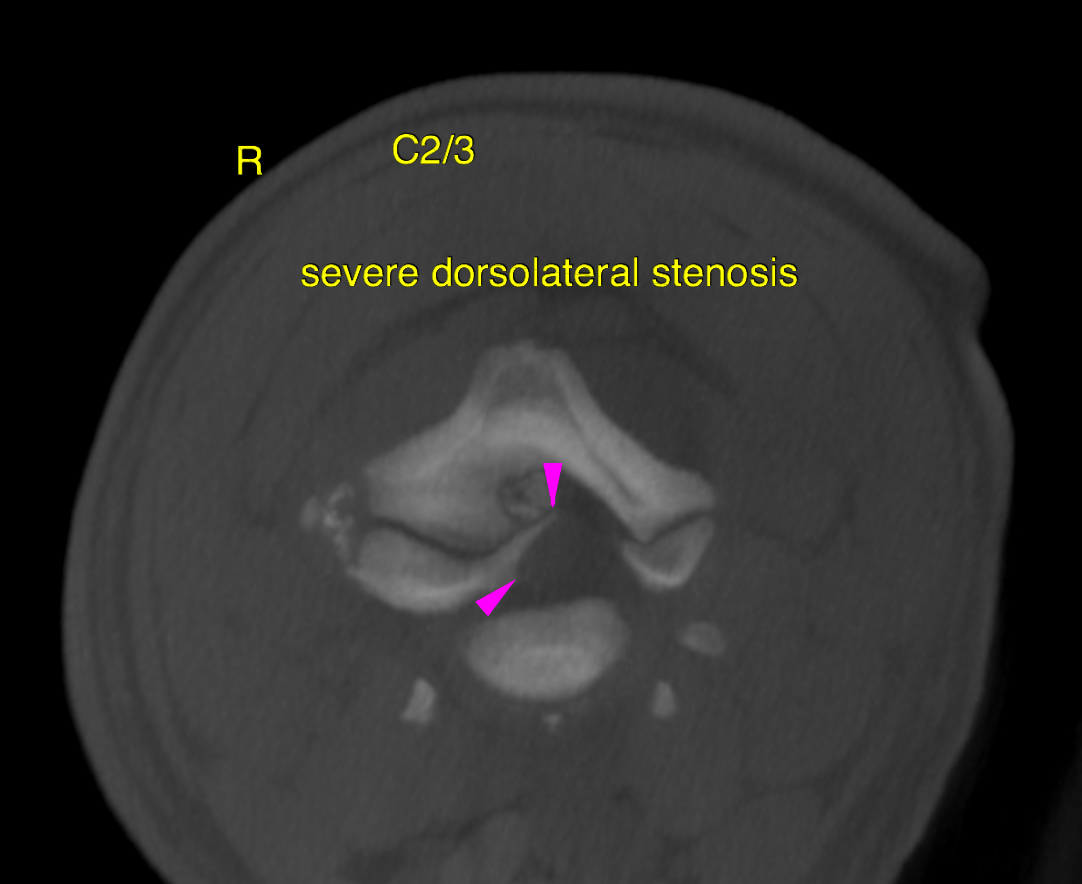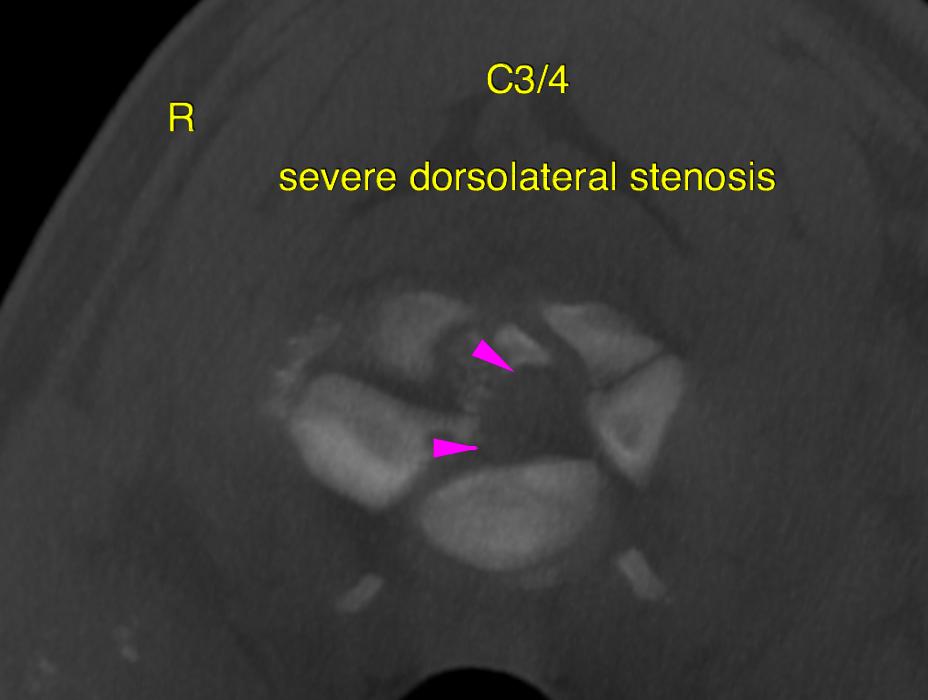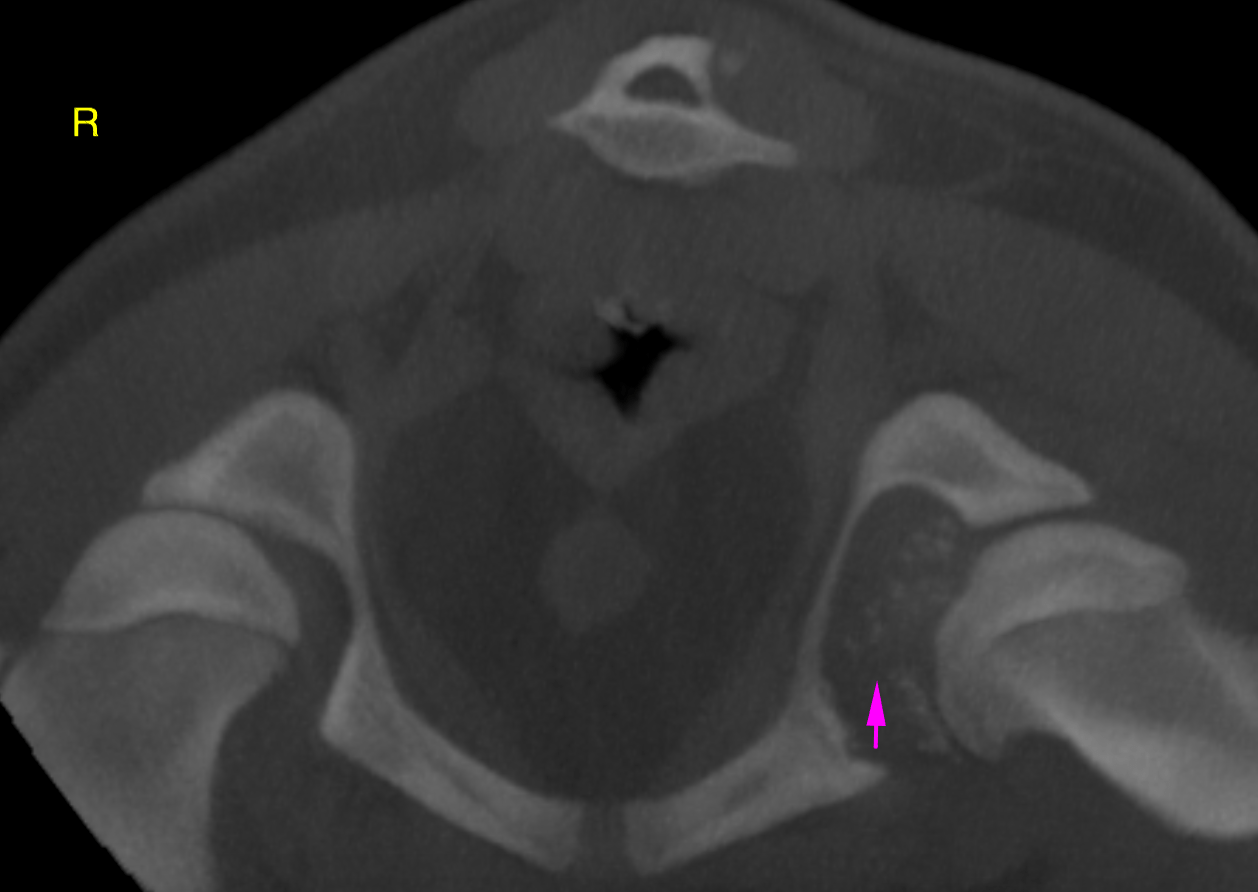CT of the spine – The computed tomography of the spine reveals multiple sites of expansile stippled new bone formation covered by cartilage-attenuating tissue associated with the articular and epiphyseal bones. Multiple vertebral joint facets, vertebral arches, spinous processes, vertebral endplates, articulations of the ribs to the vertebrae are affected as well as the scapulae, humeri and left femoral head. The lesions bridge the neighboring vertebrae. They are space occupying and associated with multifocal facet joint hyperplasia resulting in multifocal moderate to severe vertebral canal stenosis and neuroforaminal exit zone stenosis. Marked reduction of the cross sectional area of the vertebral canal is noted at the atlantoaaxial level as well as throughout the entire cervical spine, T7/8, T9/10, L3/4 and L5/6. Multifocal compressive myelopathy and neuropathy has to be assumed. Faint focal mineralization of the intraabdominal vasculature is noted and likely to be a function of the primary disease.
